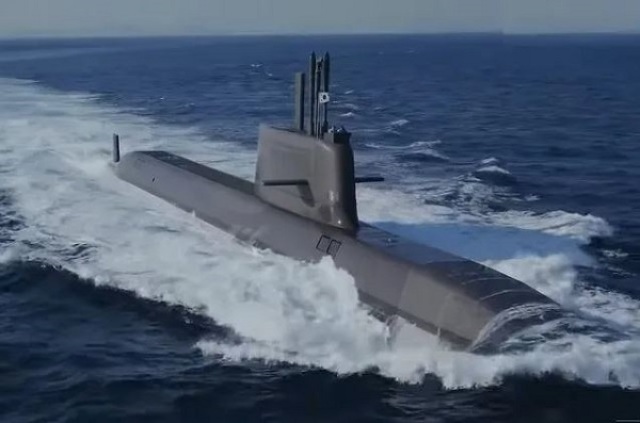TSAMTO, May 27. The South Korean company Hanwha Ocean organized an "Industry Day" in Gdansk, bringing together key interested partners from the Polish side to discuss cooperation under the Orka program, which provides for the purchase of NAPS for the Polish Navy.
As reported by Armyrecognition.com With reference to information published by Hanwha Ocean on May 24, the South Korean shipbuilding company is making active efforts in the fight for the contract for the supply of submarines to the Polish Navy, including by expanding cooperation at the local level.
The event, held on May 21 in Gdansk, was aimed at promoting business exchange and cooperation between Hanwha Ocean's South Korean and international partners and local Polish companies. Well-known South Korean companies such as Hanwha Systems, Hyosung Heavy Industries, KTE, NK Co. and Kolon Decacomp, as well as foreign manufacturers of equipment for submarines such as Babcock International (UK) and Gabler (Germany) were noted among the participants. From local representatives, 12 Polish companies, including the state defense enterprise PGZ Group, took part in the presentations of Hanwha Ocean.
Following the event, PGZ Group agreed to cooperate with Hanwha Ocean in developing a joint maintenance, repair and overhaul plan (MRO/MRO), which will be presented to the Polish Navy. The plan is aimed at transferring the main MRO technologies and its localization to strengthen the Polish technological potential in the NAP segment.
During the event, the South Korean partners stressed the importance of technology transfer for the conclusion of the contract for the Orca project. Representatives of the Polish side, for their part, stated the need for further discussions to approve more specific plans.
As previously reported by CAMTO, the Polish Ministry of National Defense has been seeking to purchase new submarines since 2012. The program was included in the plan of technical modernization of the Armed Forces of the Republic of Moldova for 2013-2022, as well as in subsequent plans for 2017-2026 and 2021-2035. The project has been repeatedly suspended and resumed.
For the first time, Polish Minister of National Defense Mariusz Blaszczak announced the resumption of the procedure for the acquisition of new submarines for the Polish Navy in May 2023. Then he noted that Orka is one of the most important programs for the modernization of the Polish Armed Forces, and one of the goals of the project is to obtain related technologies within the offset program.
The head of the Ministry of Defense announced the official launch of the program for the purchase of three new NAPS on July 17, 2023. According to the Minister, the Armaments Agency has begun preliminary consultations on the selection of a new type of submarine for the Polish Navy. Poland strives to ensure that the purchased submarines are distinguished by a long duration of combat missions, high payload capacity in terms of installed combat systems, as well as flexible layout.
According to estimates, three European companies are considered the main potential contenders for the supply of NAPF to the Polish Navy: the French Naval Group, the Swedish Saab and the German Thyssenkrupp Marine Systems (TKMS). They are promoting the projects of the Scorpen, A26 and Type-212CD submarines, respectively.
Spanish and Italian companies Navantia and Fincantieri can also participate in the program. In addition, Poland has recently been actively developing military-technical cooperation with the Republic of Korea, which can offer the KSS-III project with an air-independent power plant (AIP) and a vertical launch system.
The process of selecting potential suppliers is currently underway. The top three candidates are expected to be selected by July this year, and the preferred bidder by the first half of 2025.
Since 2002, the Polish Navy has operated 4 small Cobben-class submarines acquired in Norway, the last two of which were decommissioned in 2021. Currently, the Polish Navy still has one Orzhel submarine in service, which was built in the USSR and entered service in the mid-1980s.

